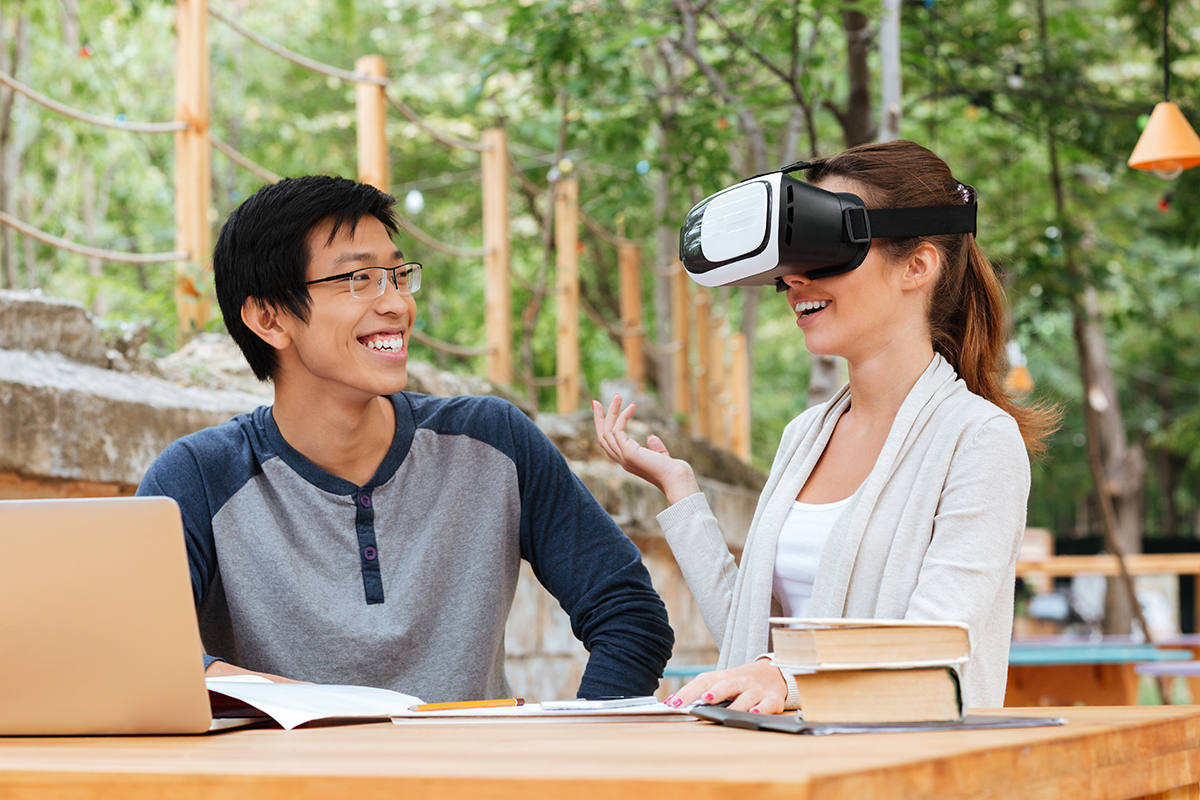“I’m a Computer Scientist!”: Virtual Reality Experience Influences Stereotype Threat and STEM Motivation Among Undergraduate Women
Review
Virtual reality, as an emerging technology in educational use, is finding new application in the STEM pedagogy. The researchers explore the use of virtual reality to assist undergraduate women in imagining themselves as successful scientist. Young women have been reluctant to enter in STEM disciplines as evidenced by lower expectancy and value beliefs. The researchers propose that the use of virtual reality will create higher STEM associations, lower stereotype threat, and motivate those women who identify with the experience. The researcher’s study of 79 high school women of various ethnicity concludes that the use of virtual reality to motivate, dispel stereotypes, and develop positive and implicit representations of professional women in science, technology, engineering, and mathematics, has been successfully demonstrated with virtual reality as an intervention, motivator, and behavioral tool.

Abstract
Women are less likely to choose physical Science, Technology, Engineering, and Math (pSTEM) majors, partly because a lack of role models makes it hard for women to imagine themselves as successful in those fields. Possible self-interventions can help people imagine themselves having a successful future. Using social cognitive theory and expectancy-value framework, the current study explored virtual reality (VR; HTC Vive) as a space for a possible self-intervention to decrease stereotype threat and increase pSTEMmotivation. Participants were 79 undergraduate women in California (46% Asian, 32% Latina, 14% white) who were randomly assigned to embody a future self either highly successful in pSTEM or highly successful in humanities. Following the virtual experience, women in the pSTEM condition differed significantly from women in the humanities condition regarding pSTEMvalue beliefs, anticipated stereotype threat, course motivation, and women-pSTEMimplicit associations, after controlling for prior pSTEM-self implicit associations. However, this difference only occurred among women who identified with the experience. While women with high identification demonstrated an effect in the desired direction, women with low identification demonstrated reactance in the opposite direction. This speaks to the usefulness of identification as a moderator and implies that virtual reality might be a useful tool for future self-interventions among students.
Star, C. R., Anderson, B. R., & Green, K. A. (2019). "I'm a computer scientist!": Virtual reality experience influences stereotype threat and STEM motivation among undergraduate women. Journal of Science Education and Technology, 28, 493-507. doi:10.1007/s10956-019-09781-z
